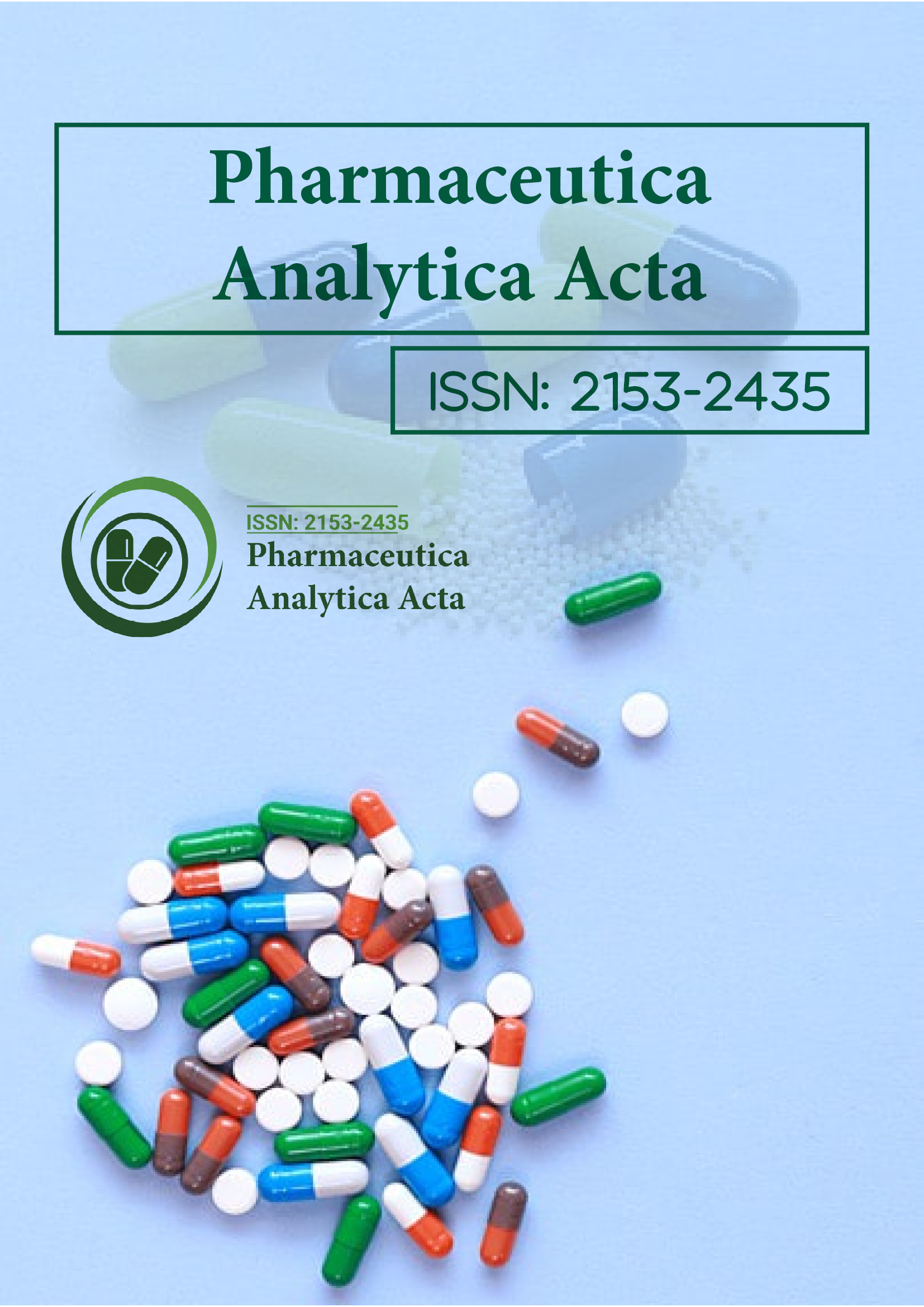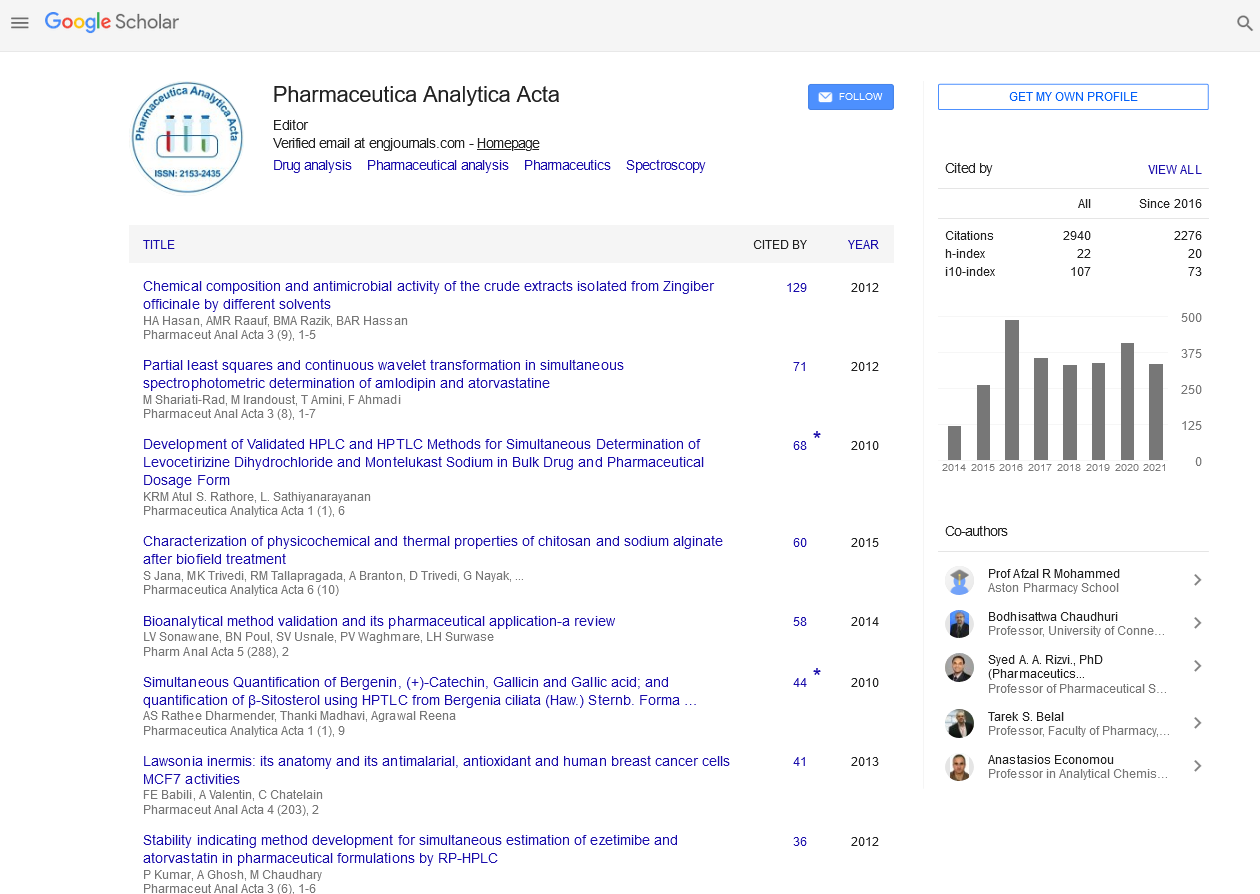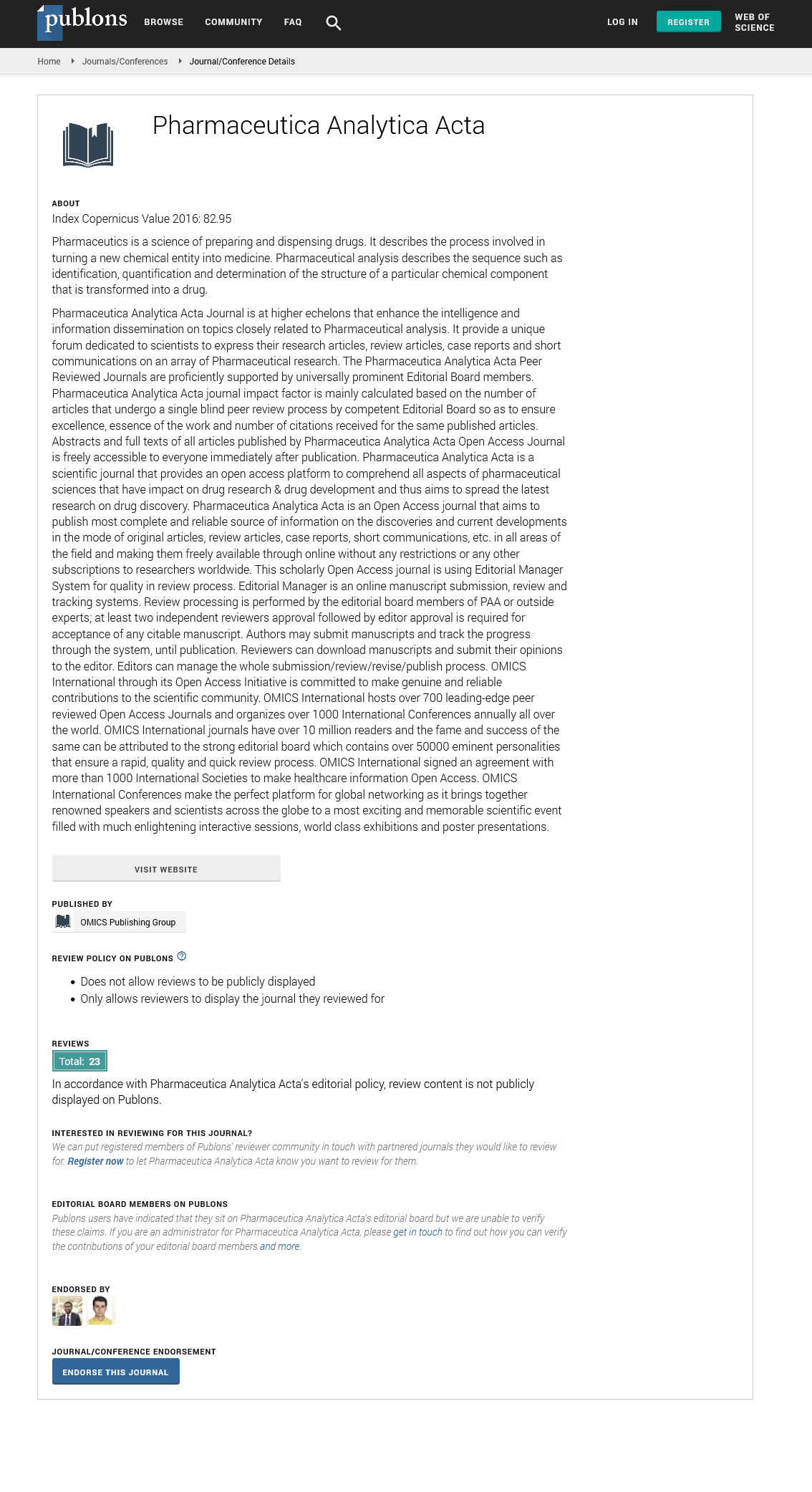Indexed In
- Open J Gate
- Genamics JournalSeek
- Academic Keys
- JournalTOCs
- The Global Impact Factor (GIF)
- China National Knowledge Infrastructure (CNKI)
- Ulrich's Periodicals Directory
- RefSeek
- Hamdard University
- EBSCO A-Z
- OCLC- WorldCat
- Publons
- Geneva Foundation for Medical Education and Research
- Euro Pub
- Google Scholar
Useful Links
Share This Page
Journal Flyer

Open Access Journals
- Agri and Aquaculture
- Biochemistry
- Bioinformatics & Systems Biology
- Business & Management
- Chemistry
- Clinical Sciences
- Engineering
- Food & Nutrition
- General Science
- Genetics & Molecular Biology
- Immunology & Microbiology
- Medical Sciences
- Neuroscience & Psychology
- Nursing & Health Care
- Pharmaceutical Sciences
Commentary - (2025) Volume 16, Issue 1
Pharmacokinetics and Bioavailability: New Analytical Approaches in Drug Development
James Williams*Received: 27-Dec-2024, Manuscript No. PAA-25-28591; Editor assigned: 30-Dec-2024, Pre QC No. PAA-25-28591 (PQ); Reviewed: 13-Jan-2025, QC No. PAA-25-28591; Revised: 20-Jan-2025, Manuscript No. PAA-25-28591 (R); Published: 27-Jan-2025, DOI: 10.35248/2153-2435.25.16.805
Description
Pharmacokinetics and bioavailability are critical factors in the process of drug development. These two concepts help determine how a drug behaves once it enters the body and how effectively it reaches its intended target. Understanding the movement of a drug throughout the body is essential for optimizing its therapeutic effect while minimizing any potential side effects. With advancements in analytical techniques, pharmaceutical scientists now have more sophisticated tools to assess and improve these parameters, thereby enhancing the development of new medications.
One of the most promising advancements in this field is the use of advanced imaging techniques. Techniques such as Positron Emission Tomography (PET) and Single-Photon Emission Computed Tomography (SPECT) enable researchers to observe the distribution and metabolism of drugs in living organisms. These imaging methods allow for non-invasive monitoring of drug movement in real time, providing valuable data that can help optimize drug formulations and dosing schedules. The ability to track how a drug spreads throughout the body and accumulates in specific tissues can also aid in identifying potential side effects or toxicities.
Another innovative approach to studying pharmacokinetics involves the use of in vitro models, such as cell cultures and organ-on-a-chip technologies. These models provide a controlled environment in which researchers can study how a drug interacts with cells and tissues before moving to in vivo testing. By simulating human biological systems, these models can help predict how a drug will behave in the human body. This method can also be more cost-effective and time-efficient compared to traditional animal testing, which often involves a lengthy and expensive process. The use of these models has the potential to accelerate the drug development process while reducing the reliance on animal testing.
In addition to advancements in analytical techniques, there has been a growing focus on improving bioavailability, particularly for drugs with poor solubility or permeability. Many drugs fail to reach their target sites because they are not effectively absorbed into the bloodstream. One approach to overcoming this challenge is the use of drug delivery systems, such as nanoparticles, liposomes and micelles. These systems can encapsulate drugs and improve their solubility, stability and absorption, leading to better bioavailability. Researchers are also exploring the use of prodrugs, which are chemically modified versions of a drug that are more easily absorbed and converted into the active form once inside the body.
Another promising strategy is the development of drugs that can bypass the gastrointestinal tract, such as transdermal patches or inhalable formulations. These methods allow drugs to be absorbed through the skin or lungs, where they can enter the bloodstream directly, bypassing the digestive system entirely. This approach can improve bioavailability for drugs that are poorly absorbed in the gastrointestinal tract, such as certain peptides or proteins. By using these advanced delivery systems, pharmaceutical companies can develop drugs with improved bioavailability, which is essential for ensuring that patients receive the full therapeutic benefit.
As the field of pharmacokinetics continues to evolve, new analytical techniques will play a vital role in advancing drug development. The ability to monitor drug absorption, distribution, metabolism and elimination with greater precision will help researchers design better drugs with optimized dosing regimens. Furthermore, improving bioavailability will ensure that more drugs reach their intended targets, improving patient outcomes and reducing side effects. Ultimately, these advancements will lead to the creation of safer, more effective medications that can address a wider range of health conditions.
In conclusion, the study of pharmacokinetics and bioavailability is a fundamental aspect of drug development. With the help of innovative analytical techniques, pharmaceutical scientists can better understand how drugs move through the body and how to improve their effectiveness. From advanced imaging technologies to mathematical modeling, these new tools provide valuable insights that will help shape the future of medicine. By focusing on improving both pharmacokinetics and bioavailability, researchers can develop more effective drugs that meet the needs of patients while minimizing potential risks.
Citation: Williams J (2025). Pharmacokinetics and Bioavailability: New Analytical Approaches in Drug Development. Pharm Anal Acta. 16:805
Copyright: © 2025 Williams J. This is an open access article distributed under the terms of the Creative Commons Attribution License, which permits unrestricted use, distribution and reproduction in any medium, provided the original author and source are credited.


